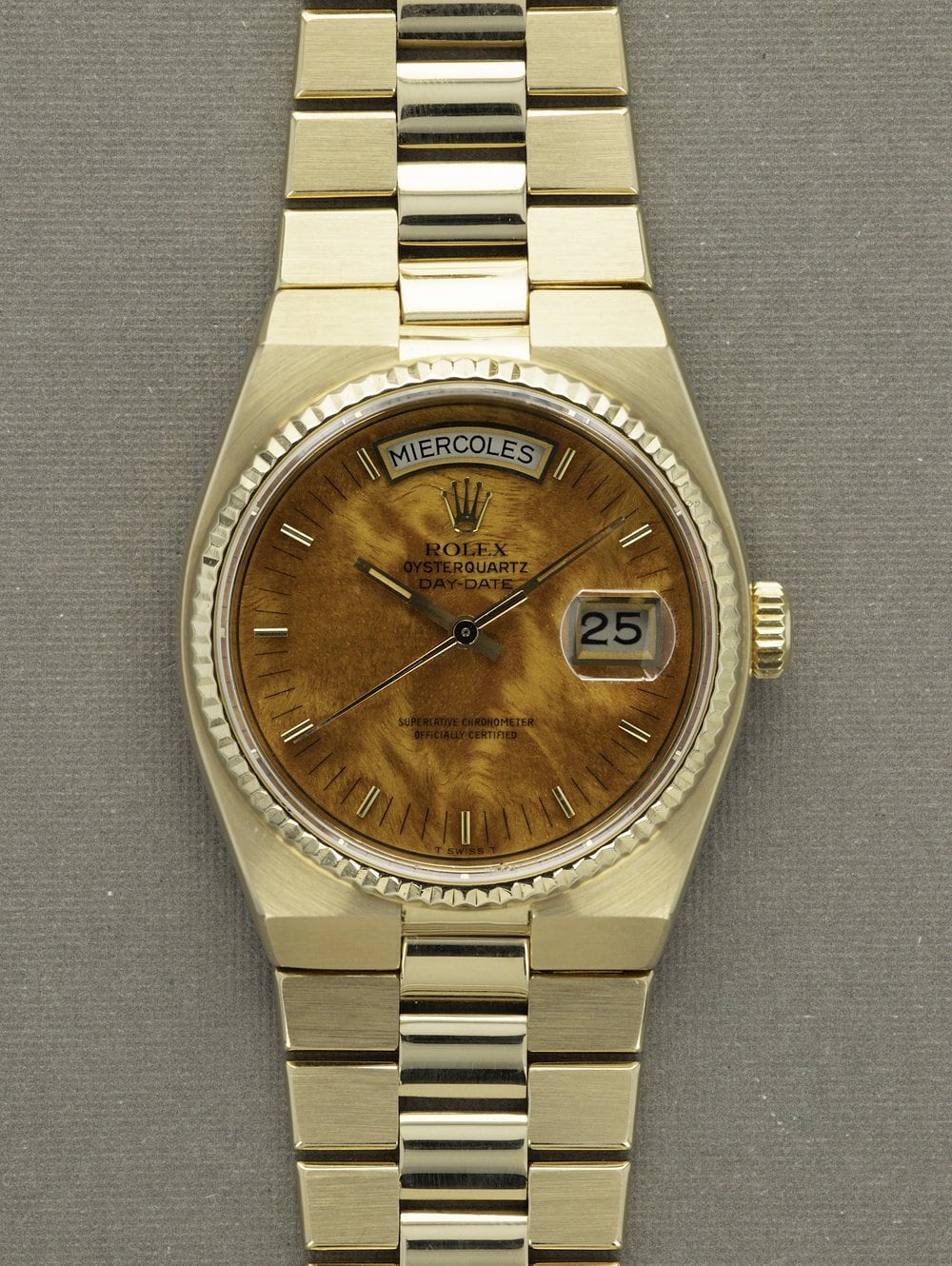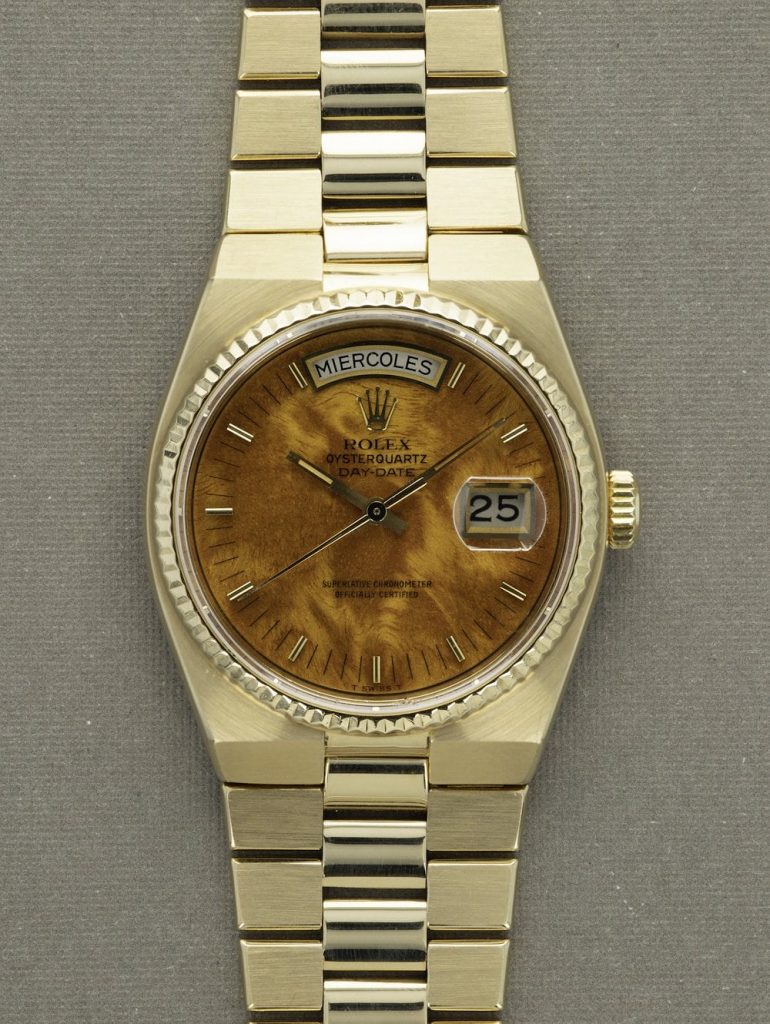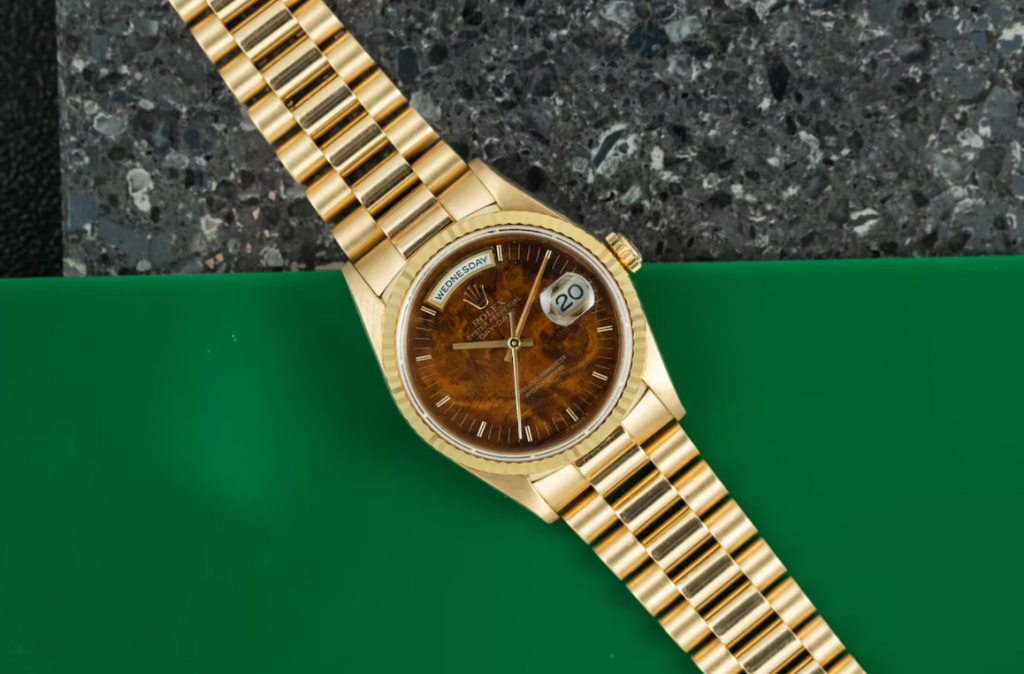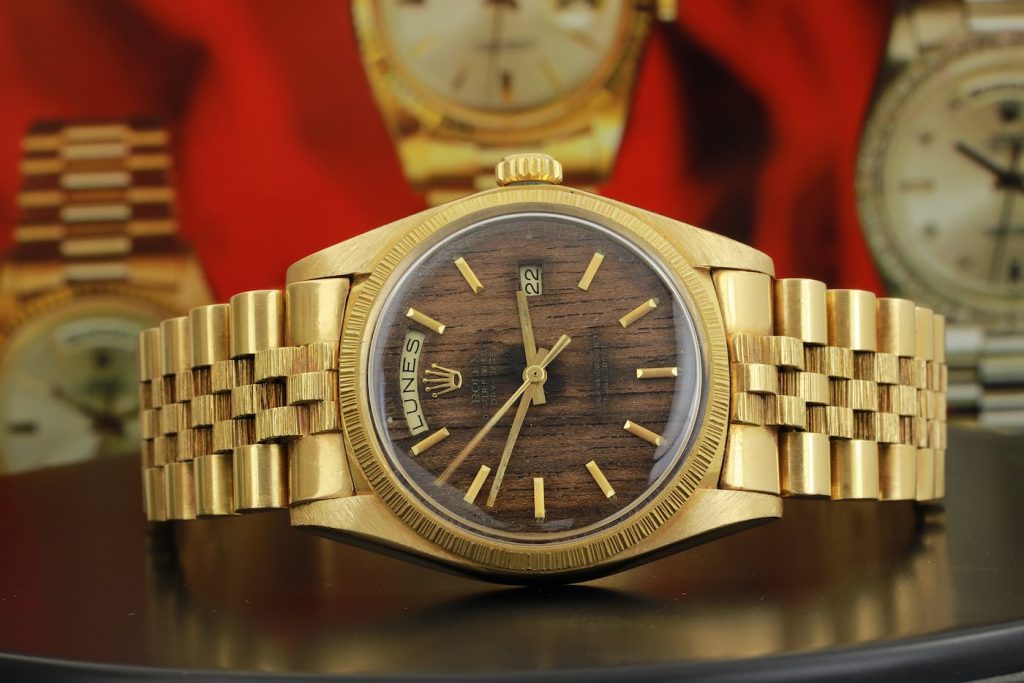The eternally beloved 1:1 fake Rolex Day-Date was introduced in 1956 as the brand’s “flagship” model, and it went on to be the foundation for a whole host of (now) extremely covetable dial variations. The early ’70s saw the introduction of high gloss enamel Stella dials, as well as the use of semi-precious hardstone dials such as lapis and onyx. But an even more unusual variant came in wooden form.
The earlier wood dial AAA fake Rolex Day-Dates in the four digit references (180x with plastic plexi crystal) are often referred to as Sequoia wood dials. The grain pattern was straight and the finish was matte with poor text quality. The fourth figure of the reference number identifies the pattern of the bezel: ref. 1802 features the smooth bezel, ref. 1803 fluted and ref. 1807 bark. These perfect super clone watches were all produced circa 1973 and housed Caliber 1556.
The bark finish on the bezel and bracelet center link of ref.1807 is a type of finishing first used by luxury replica Rolex in the early 1970s. This decorative finishing, which mimics the bark of a tree but is not actually made of wood, is particularly effective when paired with a wooden dial.
The wooden dials produced later in the ’70s for five serial number Swiss made fake Rolex Day-Dates (with sapphire crystal) were made using three different types of wood: birchwood, mahogany, and walnut. They had a layer of lacquer applied on them with the print placed on, which in turn made the text significantly more legible. This series housed Caliber 3055 which featured a quickset function.
This generation of wood dial Rolex Day-Date replica for sale is often referred to as burl wood, which is theoretically correct in that burl is a specific grain characteristic that is present on the later generation of wooden dials. But burl is not to be mistaken as a type of tree (like birch or walnut). Burl is actually a growth that forms on the outside of a tree and in turn affects the grain pattern, producing unique knots in the wood.
The more commonly known burl dials most likely replaced the earlier unlacquered sequoia close-grained variants due to burl’s material density and resistance to splitting. I personally find the burly grain more attractive as it looks richer and more unusual. Burl wood furniture was popular in the Art Deco period and had a resurgence in, you guessed it, the 1970s. I fell down a burl-themed Milo Baughman rabbit hole during my research – I’m now in the market for a burl wood credenza. Oops!
Below are some fun variants on the wood dial high quality fake Rolex Day-Date. The Oysterquartz ref. 19018 also came in a solid wood dial version as well as a diamond pattern variant referred to as “Wooden Roulette.” and Rolex Oysterquartz Day-Date ref.19028 replica online with a “Clous de Paris” / pyramid pattern on the bracelet and bezel (not pictured).
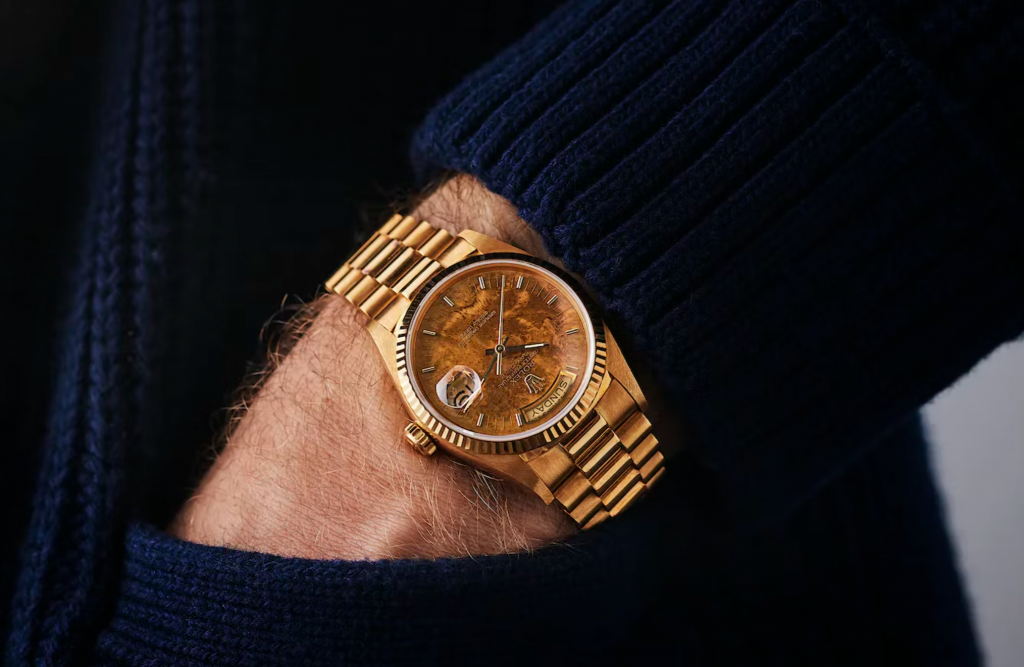
You can find Swiss movement copy Rolex Datejust models produced with wooden dials, too, including refs. 16018 and 16019 first produced circa 1979. And Lady Datejust models 6917 and 69278 were also around starting in the late ’70s.

